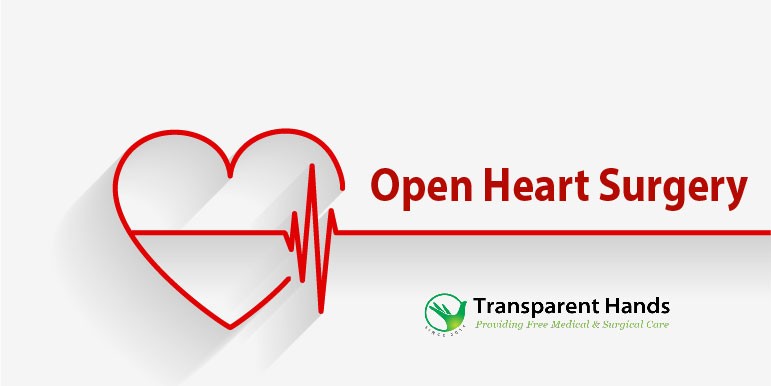Simple Guidance for You in Open Heart Surgery
Open heart surgery has proved to be a magical surgical procedure, won’t you agree about this? Mainly, cardiac issues that were untreatable recently can now be addressed adequately. And the main reason for this magical progress in cardiology is a higher success ratio of open-heart surgeries. While the term open heart surgery might be used frequently in a cardiac facility, it still has a vague sound for laypeople. It follows logically that the non-medicos of the society are not that well aware of the protocols and procedures adopted during open-heart surgery. This alarming situation necessitated a discussion that focuses entirely on this surgical procedure and gives a comprehensive account, which is precisely what we have done! So, without further ado, let us begin!
Open heart surgery: an overview
Before we jump into any nitty-gritty, let us see what the term means. An open heart surgery is any process in which the chest of the individual undergoing surgery is cut open, followed by a surgical action performed on the cardiac muscles or vascular system. This is a generalized definition of the term, so let us be more specific by mentioning CABG. The term refers to coronary artery bypass grafting and is the most common type of open-heart surgery. As you might have gathered from the name of the surgical procedure itself, it is a process that allows a grafted artery to bypass any blocked arteries in your cardiovascular system. You can visit our Official site, Transparent Hands.
When does it become indispensable?
Open heart surgery is sometimes called traditional, so don’t let the two terms confuse you. I have mentioned one indication of open-heart surgery in the previous section. Yes, a blocked artery, you guessed it right. Resumption of normal blood flow in the human body is not possible without treating the blockage, and the blockage itself is pretty dangerous since it can lead to a heart attack. However, there are other reasons for a person to undergo open-heart surgery. These include the replacement of valves of the heart, heart transplantation, or cardiac device implantation.
Preparations
In this section of the discussion, we are going to talk about the basic preparatory guidelines that are issued by cardiac surgeons all over the world before open-heart surgery. Don’t worry; these are simple enough for anyone to follow! Firstly, one must come clean about any medication one uses regularly, even for a headache or flu. Make sure that your cardiac physicians are fully aware of your underlying health problems, in case there are any! Also, quit smoking at least a couple of weeks before undergoing open-heart surgery. Some cardiac surgeons also recommend alcoholic abstinence if the patient indulges in the substance often.
How is it performed – Mentioning All the Major Steps?
We will not draw the conventional heart diagram and discuss aortas. Instead, we will give you a brief recap of all the essential steps of open-heart surgery so you can become better acquainted with the process.
- Of course, the first step in any surgery as invasive as this one is the application of anaesthesia.
- Then comes the incision step, where an eight-inch cut is made in the chest of the patient.
- The breastbone must be cut well enough to reach the heart wrapped in the pericardium.
- In the following steps, the patient is connected to the heart-lung bypass machine, allowing blood to circulate normally.
- Then, the specific cardiac action is performed, after which the original cuts are stitched up nicely.
Risks associated with open-heart surgery
Like any other surgical procedure, open-heart surgeries are associated with risks. Now, we must use the terms probable and possible risks here since not every patient is exposed to all of these risks. Factors such as age and secondary health issues also affect the risk ratio. Anyhow, the most commonly reported problem after open-heart surgery is infection. People who have diabetes are more prone to chest wound infections. Then chest pain and fever are also widely reported risks after open-heart surgery, as are blood clots and pneumonia. So, having a chat with your cardiologist pre-surgery can save you from a lot of complications post-surgery.
What happens post-surgery?
Since we mentioned post-surgery in the previous section, we also thought it prudent to briefly comment on that bit of the surgery. When a patient opens their eyes after open-heart surgery, the first thing they see are multiple tubes draining fluid out of the chest area. Don’t be freaked out by them! Your heart activity is constantly monitored via machines, and any turbulences observed are immediately noted and addressed. The first night post-surgery is spent in the ICU, while for the following week, standard care rooms will do very nicely.
Recovery after an open heart surgery
Again, one cannot answer this question in a definite tone. Many factors decide the ultimate time required for complete recovery after open-heart surgery. However, if a patient wants to accelerate the process, they will have to take care of the incision wound and be good at fighting and managing the post-surgery pains. Oh, and it is always important to sleep enough! Don’t stress yourself post-surgery for a month or so; you will be fine!
Conclusion
Well, that is all for now. We are aware that we have left many aspects of open heart surgery undiscussed. However, we are also optimistic that for novices, there was something, if not everything, new to learn. What you have right now in your mind is a rough sketch of the procedure. We want you to build on that by reading and researching more about open-heart surgeries in detail!

















